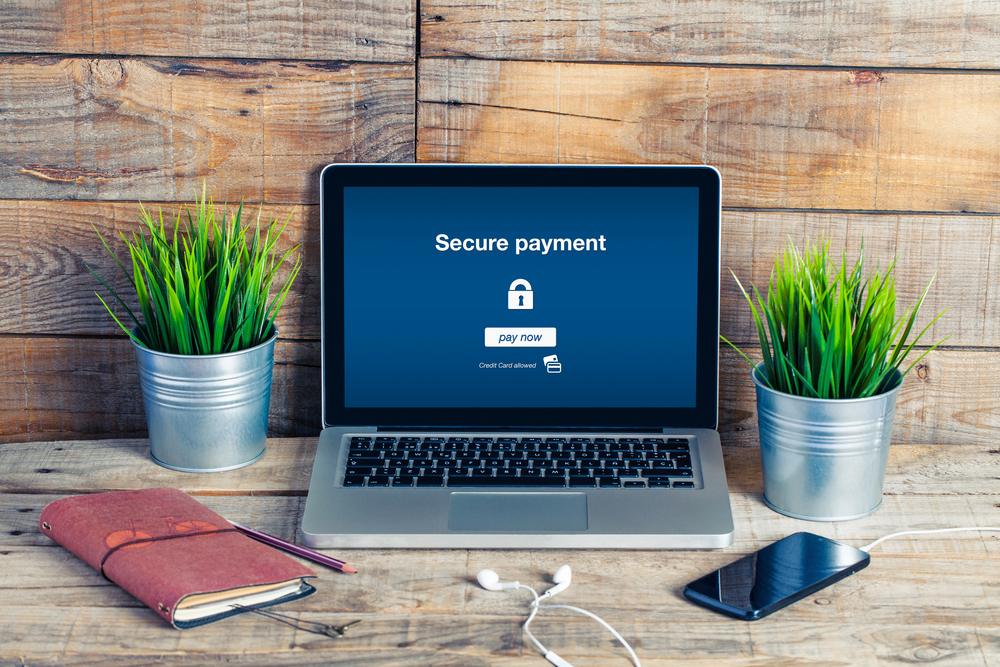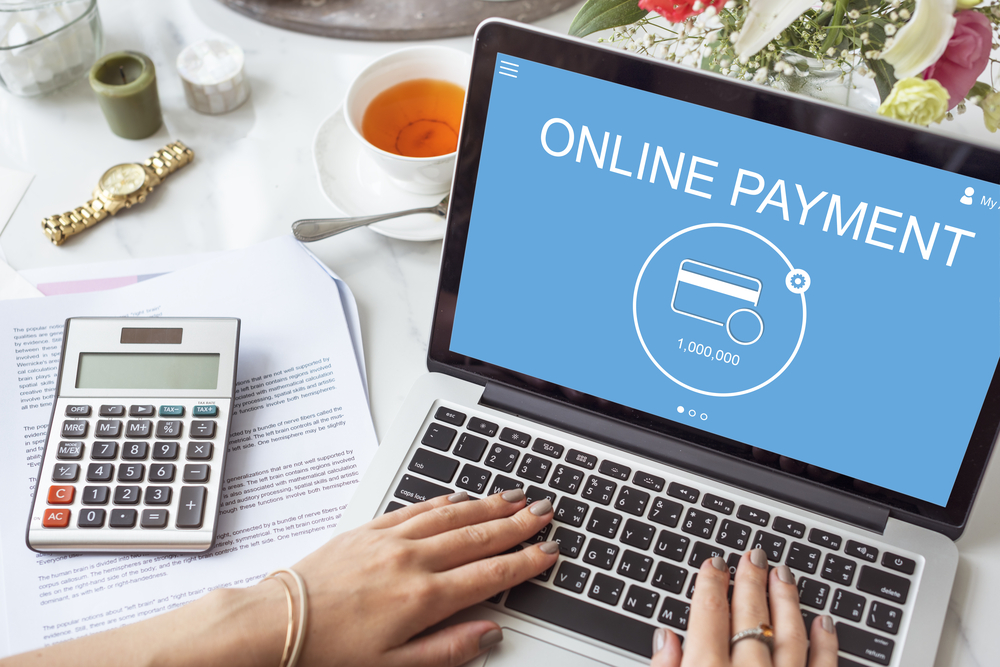 When you first began freelancing, figuring out a way to get paid by clients quickly was probably at the top of your list of important to do items. But have you revisited your payment network and online invoice software system since you first started?
When you first began freelancing, figuring out a way to get paid by clients quickly was probably at the top of your list of important to do items. But have you revisited your payment network and online invoice software system since you first started?
Have you thought about how secure your systems are? And whether or not there is a better option for your business at this point?
Remember, every facet of your business that touches your clients is important. If you want your clients to take you seriously and trust your brand, then you need to present your business professionally. Even when it comes to smaller processes like how you send your invoices each month and the way you collect your payments.
First, if you’re not currently using a comprehensive, professional online invoice software system, you should be.
Next, consider the various digital payment systems that let you invoice clients quickly and easily. While Spera users enjoy having integrated invoice software and payment network options in the app, we’ve also outlined information on some of the most popular platforms below.
What is a Payment Network and How Does It Work?
 As a freelancer, implementing a reliable payment network that both you and your clients can trust is incredibly important.
As a freelancer, implementing a reliable payment network that both you and your clients can trust is incredibly important.
An online payment network is a system that handles various aspects of a digital transaction, from the initial purchase made by a consumer to the transferring of funds between financial institutes.
When you purchase anything online, you are using a payment network to pay for your services or goods. The purpose of payment networks is to connect a merchant (the person selling the goods or services online) with a financial institute or issuer, so they can fulfill customer orders.
According to Worldpay, “There are a number of transactions types supported by payment networks. They include transactions at ATMs – such as cash withdrawals, transfers and deposits – and at POS terminals where a cardholder swipes, taps or inserts the card or payment device. So, anytime a transaction is made and money needs to be transferred, a payment network is behind the scenes. Payment networks also support peer-to-peer payments and bill payments.”
As of 2008, almost 90% of online retail transactions were made with credit cards in North America.
The bottom line? If you’re not already accepting credit cards from your clients as a form of payment, it’s time to start. Don’t forget, the easier you make your payment process for your clients, the quicker you’ll get paid.
Popular Digital Payment Systems to Explore
 Thanks to the internet, there is a huge variety of online payment network options to explore. It’s important to consider the specific needs of your freelance business before selecting (and implementing) a payment network.
Thanks to the internet, there is a huge variety of online payment network options to explore. It’s important to consider the specific needs of your freelance business before selecting (and implementing) a payment network.
Here are some of the most popular payment services you’re likely to come across in your research:
Oracle
Oracle Payments is a “complete payment and receipt processing solution that enables efficient, reliable and secure financial transactions,” according to their website.
Among the benefits the payment network system boasts are:
- Payment processing capabilities across multiple organizations, currencies and regions.
- Secure storage of all payment information and instruments, acting as a payment repository for businesses.
- End-to-end electronic payment processing that includes validation, aggregation, formatting and secure transmission of payments to financial institutions and payment systems.
Intuit
Intuit’s QuickBooks system tracks client invoices, offers real-time payment alerts and allows you to stay in touch with clients when you need to.
- The system also lets you know when customers view and pay invoices.
- Helps you set up automated and personalized reminders for your client’s invoices.
- Integrates with TurboTax to decrease your stress come April.
Stripe
The Stripe payment network allows anyone from freelancers to large retailers to accept credit cards for their goods and services.
- Stripe’s services can be used for subscription services, on-demand marketplaces, e-commerce stores, and many others.
- Stripe claims that “millions of the world’s most innovative technology companies are scaling faster and more efficiently” by building their businesses with their API.
Square
With Square, you’re able to accept credit cards almost anywhere. Once signing up for the Square system, you are sent a free credit card reader in the mail. This may be ideal for those who frequently bill clients in person, like artists and photographers.
Per their website, some of the advantages of using Square include:
- Credit card processing that lets you accept all major cards and get deposits as fast as the next business day.
- The ability to connect a Square Reader to your mobile device or an iPad.
PayPal
PayPal is one of the most popular payment network platforms online. It is a “global e-commerce business allowing payments and money transfers to be made through the Internet.”
- PayPal offers payment processing for online vendors, auction sites, and other commercial users, for which it charges a fee.
- The system’s amount of fees increases as the amount of money accepted by merchant increases. Therefore, it may not be a good option for freelancers billing a significant amount each month.
- Additionally, PayPal allows businesses to accept a variety of currencies. This is a convenient feature, but it also comes with hefty fees for currency exchanges.
Venmo
The new(est) kid on the block, Venmo payment network app touts itself as being super secure, ensuring customers that their “personal and financial data is encrypted and protected on our secure servers to guard against unauthorized transactions.”
- Venmo allows freelancers to quickly bill clients who also use the app, via their mobile device. Invoices can be sent if you’re familiar with someone’s phone number or email address associated with the account.
- If you send money using your Venmo balance, bank account, debit card or prepaid card, you will incur zero fees. There is a 3% fee when someone uses a credit card to pay their invoice.
Although it’s convenient for some smaller transactions, overall, Venmo isn’t a very professional or comprehensive method to send client invoices as a business, due to its limited functionality.
These are some of the more traditional payment networks that deal with US currency. But, if you’ve read any headline recently, you’ve probably heard of the increased adoption of cryptocurrency.
Maybe you’ve even wondered if it’s a viable payment network option for your business.
Well, many other freelancers and digital nomads seem to think so.
Interested in cryptocurrency payments? Learn more about how freelancers, small businesses and independent contractors of all sizes are using cryptocurrencies to do business in our Freedom Economy Report HERE.
Qualities to Look for in an Online Payment Network
 To ensure they are getting paid with a secure and effective system, it’s vital that freelancers know what to look for in an online invoice software and payment network.
To ensure they are getting paid with a secure and effective system, it’s vital that freelancers know what to look for in an online invoice software and payment network.
Be sure the system you opt for allows you to:
- Easily show your clients that their payment is secure and not at risk of being compromised when they pay you.
- Track each of your client’s payments, and let them see what they owe you, and when. Payment tracking also comes in handy when you’re dealing with the occasional missed or late bill.
- Get paid quickly! The faster your client can get through your payment process, the quicker you see money in your bank account Be sure you’re setting yourself up to get paid quickly.
- Low cost, with minimal fees. Unfortunately, some payment network companies take high fees for processing your payments.
Choose a Better Payment Network and Opt for Comprehensive Online Invoice Software
 If you’re looking to present your business in a more professional light this year, start by using a superior payment network and online invoice software platform.
If you’re looking to present your business in a more professional light this year, start by using a superior payment network and online invoice software platform.
There are several ways you can collect payments online for your freelance business, but the best solution for you is one that works with your own unique business needs.
Be sure to weigh the pros and cons of each option you are exploring to determine whether or not it’s a good fit for your business type and your clients.
Additionally, research whether the payment network is showcasing your brand in the manner you want it to. Are you able to customize your payment requests? Are the payment requests cohesive with the look and feel of your brand?
With Spera’s online invoice software, you’re able to not only customize your invoices with your company information and logo, but also send your clients payment requests within a matter of seconds.
Additionally, our systems allow you to:
- Seamlessly set up your automated billing schedule for each client. No more generating invoices in an Excel Sheet month after month.
- Customize your invoices to reflect your business the way that you should be- professionally!
- Allow your client to pay in whatever way is most convenient for them, including online transfers, credit cards, debit cards, and many others.
- Grant access to your client’s so they can see their account overview at any time. Take the guesswork out of what bills they owe you, and when they’re due.
- Set up automatic payment reminders when your client’s payments are due.
Our invoice software makes requesting payments and getting paid by your clients significantly easier. Remain super organized and on top of your freelancing business’s finances at all times (wouldn’t that be a relief?).
Ultimately, Spera’s online invoice software is here to make life easier for you and your clients.

